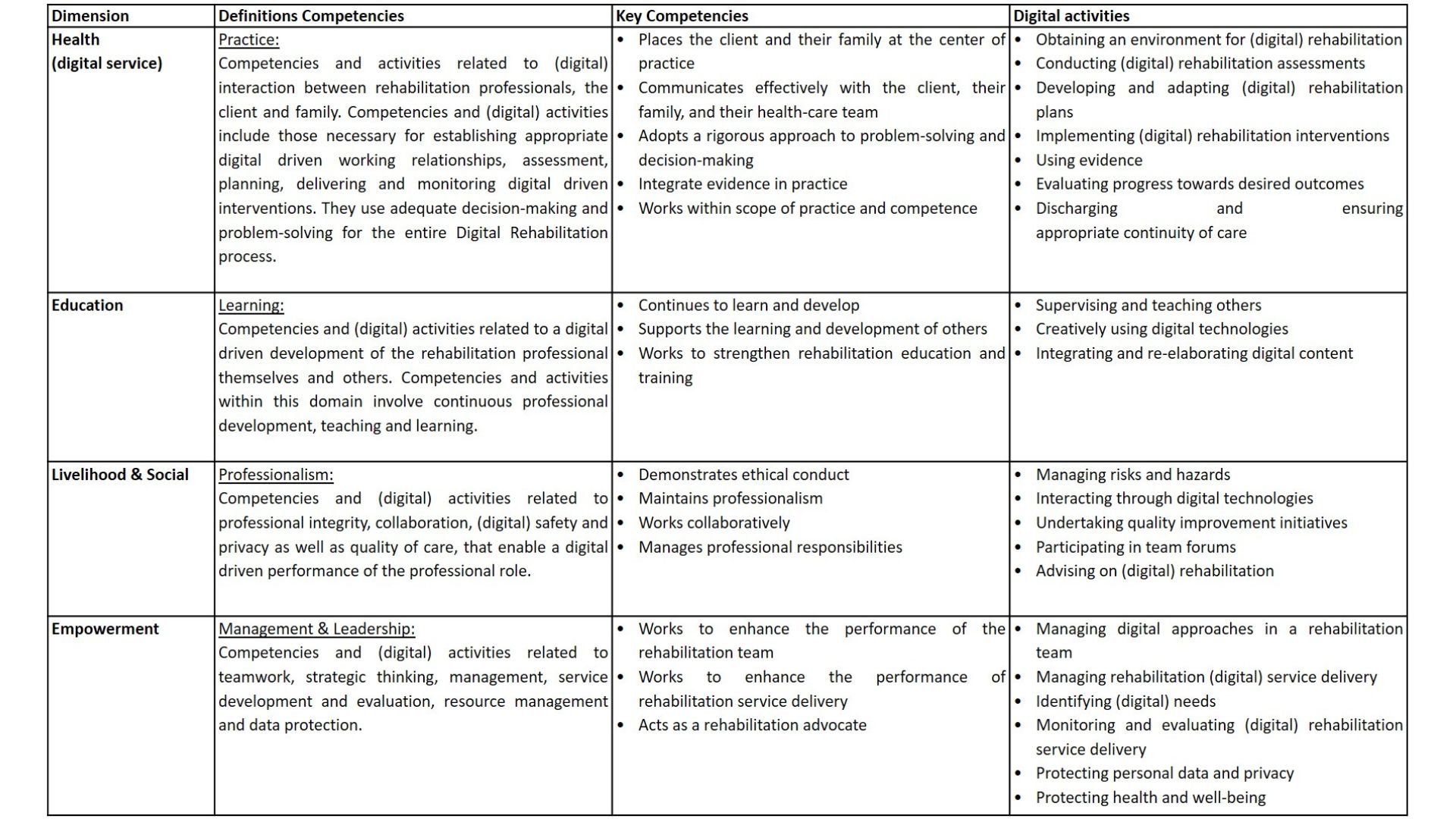3.1 Competency Framework
For effective Digital Rehabilitation services, the rehabilitation professional need a diverse set of competencies [2] to provide and support rehabilitation services, encompassing both digital and non-digital components throughout the entire rehabilitation process.
To show what competences are needed to perform Digital Rehabilitation, the Framework for Digital Rehabilitation Competences in East Africa (FDRC-East Africa) was created as a part of the RADIC project. The framework outlines the essential aspects of Digital Rehabilitation in the region, aiming to improve access to rehabilitation and to enhance quality of care. It covers the necessary competencies, digital activities, and behaviors required by the rehabilitation professionals to effectively provide and support rehabilitation services, encompassing both digital and non-digital components throughout the entire rehabilitation process.
The framework is organized around four dimensions: health, education, livelihood & social and empowerment and is linked to the Community-based Rehabilitation Indicator Manual [3]. The dimensions describe the outcomes for rehabilitation professionals to achieve successfully through Digital Rehabilitation interventions. To achieve the outcomes, the dimensions are linked to key competencies and digital tasks. For this purpose, four competence domains are defined and mapped to a behavior that the rehabilitation professional should demonstrate. For this, the competencies are complemented with activities and tasks rehabilitation professionals should achieve in the rehabilitation process in order to successfully apply (digital) rehabilitation. This FDRC-East Africa is intended to serve as a guide for teaching and practice.
The FDRC-East Africa is applicable to all rehabilitation disciplines and settings in East Africa, catering to clients of all ages receiving physical and mental rehabilitation. The framework was developed through an iterative process involving input from relevant stakeholders such as rehabilitation professionals, educators, and students, as well as the sources mentioned.
For the development of this framework, the following sources were used:
- Community-based Rehabilitation Indicator Manual [3]
- Rehabilitation Competency Framework [4]
- DigComp 2.2. - the Digital Competence Framework for Citizens [5]
- Needs assessment, a result of the RADIC-project
- Landscape analysis, a result of the RADIC-project
In table 1, we are presenting the four dimensions with the respective competencies, key competencies and digital activities required by the rehabilitation professional in order to perform successfully Digital Rehabilitation in East Africa. This table should serve as an overview. If you are interested in the complete framework, switch to the handbook for teachers/educators (coming soon).

Table 1. Dimensions, Definitions of Competencies, Key Competencies and digital activities in Digital Rehabilitation in East Africa.